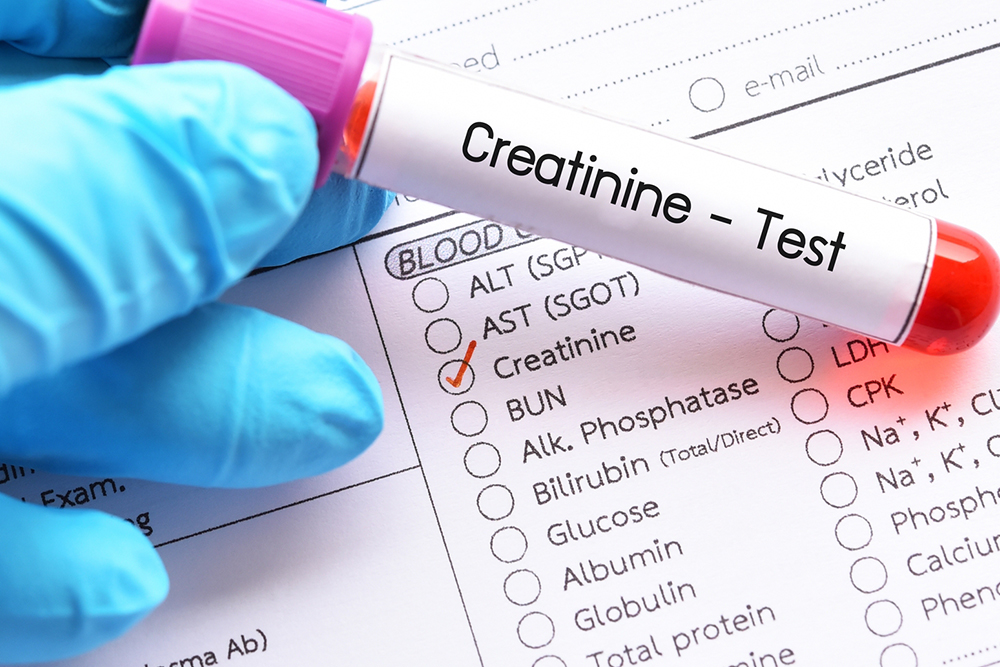Comprehensive Guide to Creatinine Levels: How to Read and Interpret Kidney Function Tests
This comprehensive guide explains how to understand and interpret creatinine levels, highlighting their significance in assessing kidney function. It covers measurement methods, reference charts, and why monitoring is essential for early detection and management of kidney health issues. Whether you're a patient or healthcare professional, understanding these markers helps in maintaining optimal kidney health and preventing disease progression.

Comprehensive Guide to Creatinine Levels: How to Read and Interpret Kidney Function Tests
Creatinine is a crucial waste product generated in muscles during normal metabolic processes. It plays an essential role in muscle energy production, but once produced, it needs to be efficiently eliminated from the body to maintain health. The primary organs responsible for removing creatinine are the kidneys, which filter it out of the blood and excrete it through urine. Monitoring creatinine levels is central to evaluating kidney health, especially since elevated levels can be indicative of impaired renal function or other underlying health issues. Understanding how creatinine levels fluctuate and how to interpret these values using clinical charts is vital for early diagnosis and effective management of kidney-related conditions.
Methods to Measure Creatinine
The measurement of creatinine levels typically involves two primary methods: serum creatinine testing and urine creatinine testing. The serum creatinine test involves drawing blood to determine the concentration of creatinine in the bloodstream, providing a snapshot of kidney filtration efficiency at a given moment. Urine tests, often collected over a 24-hour period, measure the amount of creatinine excreted to assess how well the kidneys are filtering waste over time. Combining these two measurements yields a more comprehensive indicator called creatinine clearance, which estimates the glomerular filtration rate (GFR) — the key indicator of overall kidney function. These tests are non-invasive, relatively simple to perform, and critical for diagnosing and monitoring kidney disease.
Understanding Creatinine Level Charts and Their Significance
Interpreting creatinine levels accurately requires understanding standard reference ranges, which are influenced by factors such as age, gender, muscle mass, and overall health status. Creatinine charts serve as valuable tools for healthcare professionals, offering clear benchmarks and reference values tailored to specific demographic groups. These charts are essential for distinguishing between normal variations and abnormal results that may indicate underlying health issues.
Serum Creatinine Reference Charts
Serum creatinine levels are measured in milligrams per deciliter (mg/dL). For healthy adults, typical ranges differ between men and women due to differences in muscle mass. For instance, adult males generally have serum levels between 0.7 to 1.3 mg/dL, while females usually range from 0.6 to 1.1 mg/dL. Maintaining levels within these ranges suggests optimal kidney function, whereas higher readings could point to renal impairment. Regular testing and comparison with standard charts enable early detection of kidney abnormalities, facilitating timely intervention.
Creatinine Clearance Charts and Their Importance
Creatinine clearance, expressed in mL/min/BSA (milliliters per minute per body surface area), offers a detailed assessment of how effectively the kidneys filter waste. Normal values vary by age and gender; for example, healthy young adults aged 18-29 typically exhibit clearance levels between 78 to 161 mL/min/BSA. For those aged 30-39, the range is approximately 72 to 154 mL/min/BSA. As individuals age, creatinine clearance generally declines, reflecting physiological changes in kidney function. Tracking these values over time helps in diagnosing chronic kidney disease, assessing disease progression, and evaluating the efficacy of treatments.
Why Monitoring Creatinine Levels Is Essential
Creatinine levels act as vital indicators of kidney health because they directly reflect how well the kidneys are filtering waste. Elevated creatinine may manifest through symptoms such as swelling (edema), fatigue, reductions in urine output, or the presence of blood in the urine. Regular testing becomes especially important for individuals at higher risk of kidney problems, including those with diabetes, hypertension, or a history of kidney transplants. Early detection through consistent monitoring allows for timely intervention, potentially preventing further kidney deterioration.
Moreover, ongoing creatinine testing plays a crucial role in managing diagnosed kidney disease, especially for monitoring disease progression and treatment effectiveness. For patients undergoing dialysis or other therapies, creatinine levels help determine treatment adequacy. Additionally, understanding the natural variation in creatinine due to factors such as age, gender, and muscle mass supports personalized health assessments. For example, women typically exhibit slightly lower levels owing to differences in muscle mass, and levels tend to decline in older adults as muscle tissue diminishes over time. Recognizing these variations helps healthcare providers avoid false alarms and ensure accurate diagnosis.




